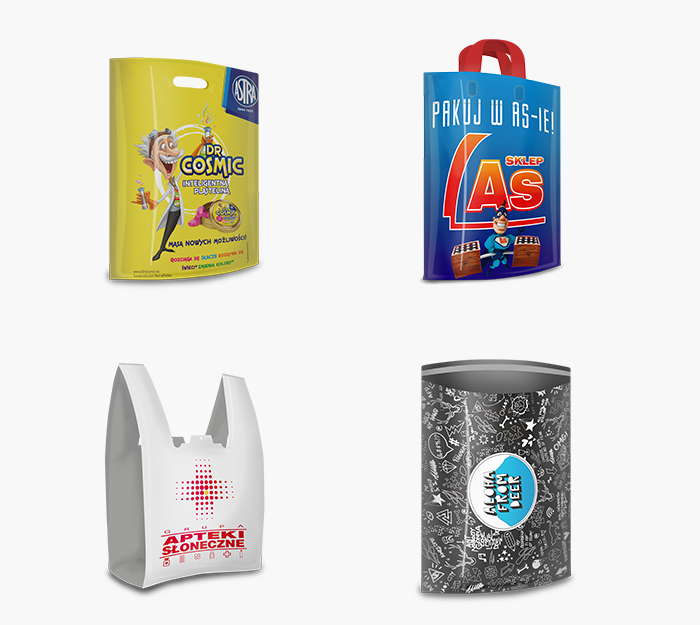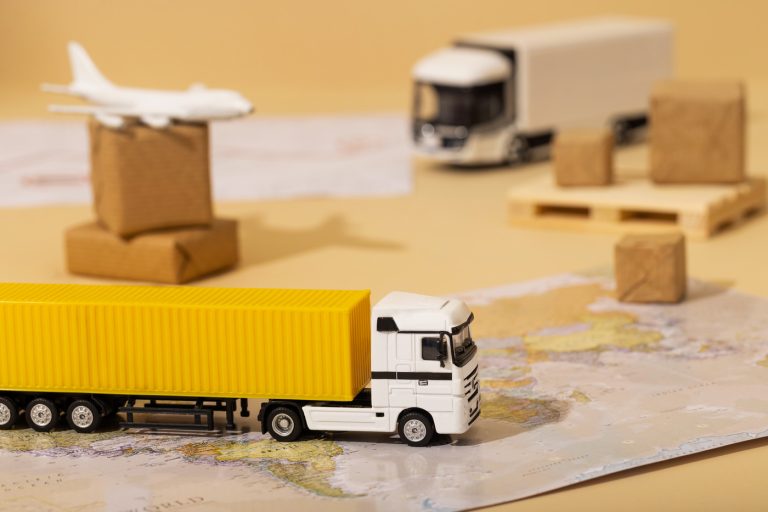Colorful paper tapes - eco-friendly packaging in practice
Colored paper tapes are a versatile and environmentally friendly packaging material that is gaining popularity in both professional and home applications. Their aesthetic appearance, durability and ease of personalization make them an excellent choice for logistics, marketing, and creative projects. Below are detailed characteristics, types and differences between paper and traditional plastic products.
Definition and characteristics of color paper tapes
These are specially made from high-quality kraft paper, recycled or composite materials, dyed in various colors. They are eco-friendly, biodegradable, yet strong enough to meet transportation and marketing requirements.
Features:
- Ecology - manufactured from natural or renewable materials that are biodegradable.
- Personalization - available in a wide range of colors and with options for imprinting, such as logos, advertising slogans or graphic designs.
- Durability - Tensile and rupture resistance, allowing for safe packaging.
- Ease of use - They can be applied by hand or with dispensers.
They are particularly valued for their ability to combine aesthetics with practicality, making them a unique solution in the packaging market.
Types of paper tapes
They differ not only in color, but also in application and properties. Here are the main types available on the market:
1. printed
- Ideal for companies looking for a way to stand out from the competition.
- Possibility of logo, advertising slogan or other graphic elements.
- Mainly used in marketing and logistics to build brand recognition.
2. unprinted
- Minimalist versions that are perfect for everyday packing.
- Popular in the e-commerce sector and small businesses.
- Thanks to their neutral colors (e.g., kraft brown, white), they fit in well with eco-friendly trends.
3. in various widths
- Narrow - used for delicate and precise tasks, such as markings or decorations.
- Wide - Designed for securing large and heavy parcels, guaranteeing greater strength.
Key differences between paper and traditional plastic ones
Comparing colored paper tapes with traditional plastic products, we can see several important differences:
1. ecology and biodegradability
- kraft: Fully biodegradable and environmentally friendly, which is especially important in the context of growing environmental awareness.
- plastics: Made of materials such as PVC or polypropylene, which are difficult to recycle and take a long time to decompose in the environment.
2. aesthetics and personalization
- kraft: With a wide range of colors and printing options, they offer greater aesthetic and marketing opportunities.
- plastic: Typically less aesthetically pleasing, available in a limited number of colors and with a more difficult personalization process.
3. durability and functionality
- kraft: Excellent for light to medium loads, but may require caution in wet conditions.
- plastic: Better for extreme loads and severe weather applications, but less environmentally friendly.
4 Price and availability
- kraft: Usually slightly more expensive than the standard plastic counterparts, although their popularity is growing, resulting in greater availability.
- plastic: Despite their lower price, their long-term environmental impact may discourage more environmentally conscious consumers.
Use of colored ribbons

It is a versatile material that is used in various areas of life and business. Thanks to their unique properties, such as eco-friendliness, ease of personalization and aesthetic appearance, they are increasingly chosen as an alternative to standard products.
In the logistics and packaging industry
They play a key role in the logistics industry, especially in packaging and transportation processes.
Applications:
- Securing parcels: Thanks to their durability and strong adhesive properties, they effectively protect shipments during transport.
- Segregation of shipments: The colored tapes make it easy to identify packages by delivery priority, contents or destination.
- Building a green corporate image: The use of biodegradable in packaging underscores the brand's commitment to the environment.
In creative gift wrapping
They are an indispensable decorative element when wrapping gifts. With a wide range of colors and designs, they are a great alternative to ribbons and other decorations.
Creative applications:
- Create unique designs: They can be used to create geometric patterns or lettering directly on the packaging.
- Personalization of gifts: Adding a personalized imprint, such as the recipient's name or a short message, makes the gift more special.
- Replacement of decorative paper: The wide ones can serve as a substitute for standard decorative paper, giving a minimalist but aesthetically pleasing effect.
In the office and everyday applications
They also work well in offices and everyday life. Their eco-friendly qualities make them a practical choice for those who care about the environment.
Application examples:
- Office Decorations: They can be used to personalize the workspace by decorating office items.
- Repairs and DIY: Thanks to their ease of application and aesthetic appearance, they are suitable for quick fixes or creative DIY projects, similar to those found in tutorials on how to make a sliding door for a shed.
In marketing as an element of visual identity
One of the most important uses is their role in branding. Personalization is an effective marketing tool that increases company recognition.
Applications in marketing:
- Branding: Colorful logo tapes or advertising slogan emphasize the company's professionalism and strengthen its visual identity.
- Packaging aesthetics: Refined packaging in the right color attracts customers' attention and builds a positive first impression.
- Promotions and campaigns: Special editions with seasonal themes (such as Christmas) can be part of time-limited marketing campaigns.
Advantages
They not only offer a wide range of applications, but also stand out for their many advantages. Their unique properties make them an increasingly popular solution in various industries.
Eco-friendliness and biodegradability
In an era of growing environmental awareness, they are an excellent alternative to plastic products.
Why choose them?
- Made of natural materials that are biodegradable.
- Reduce companies' carbon footprint by using renewable raw materials.
- Can be recycled with other paper waste.
Can be personalized (colors, prints, logos)
Personalization options:
- Choose from a wide range of colors that match the brand's corporate identity.
- Can be imprinted with a logo, advertising slogan or unique design.
- Flexibility in adjusting the width printed tapes to the user's needs.
Durability and convenience of use
Functional Features:
- Tensile and rupture resistance.
- Ease of application - both by hand and with tools such as dispensers.
- Effective bonding even on surfaces such as cardboard and wood.
Their functionality makes them suitable for a variety of tasks, from logistics to DIY projects, such as creating custom sliding doors for sheds.
Aesthetic aspects - how do colors affect brand perception?
Color impact:
- Color psychology: Warm colors (red, orange) can evoke emotions such as excitement, while cool colors (blue, green) are associated with calmness and professionalism.
- Creating Experiences: Aesthetically pleasing packaging with a colorful ribbon increases customer satisfaction with the purchase.
- Attracting attention: In vivid colors, they help distinguish products on store shelves.
They combine functionality with aesthetics, making them an excellent choice for companies looking to stand out in the eyes of their customers.
Production process of color paper tapes
The production of colored ribbons is a multi-step process that requires the precise selection of materials, advanced coloring techniques and compliance with environmental standards. Choosing the right methods and raw materials allows us to create a product that combines aesthetics, functionality and environmental concerns.
Choice of material: kraft, recycled or specialty paper
- Kraft paper:
- Durable and resistant to damage, ideal for transport packaging.
- Its natural texture and color are a perfect match for eco-friendly trends.
- Recycled paper:
- It is created from recycled materials, which reduces the carbon footprint.
- It features a slightly rough surface, but can be colored and personalized.
- Specialty paper:
- Used in advanced applications, such as waterproof or fiber-reinforced.
- It is suitable for challenging projects such as building DIY items, such as how to make a sliding door for a shed.
The choice of the right paper depends on the intended use of the tape and the customer's priorities, such as durability or aesthetics.
Dyeing and printing techniques
Dyeing and printing are key production steps that determine their final appearance and functionality.
- Staining techniques:
- Water-based dyes: environmentally safe, provide even coverage.
- Spray or dipping methods: guarantee color fastness, even under heavy use.
- Imprinting techniques:
- Screen printing: Allows precise reproduction of details such as logos and text.
- Flexography: a fast and effective method used for large print runs.
- Digital printing: ideal for short runs or more complex designs.
Environmental standards in production
Production must meet strict environmental standards, which is a key element in their growing popularity.
- Use of renewable raw materials: Kraft and recycled paper reduce dependence on virgin raw materials.
- Organic dyes: Water-based paints eliminate harmful chemicals that can seep into the environment.
- Waste Minimization: Thanks to advanced manufacturing processes, waste is kept to a minimum.
Meeting these standards makes paper tapes are in line with the expectations of consumers, for whom sustainability is a priority.
An element of marketing strategy
Colorful paper tapes are not only a practical packaging material, but also a powerful marketing tool that can increase brand recognition and improve customer experience.
Personalization with logos - how does it build brand image?
Adding a logo or advertising slogan is an effective way to strengthen a brand's visual identity.
- Building Recognition: Each shipment with a company's ribbon becomes an advertising medium, increasing brand visibility.
- Professionalism: Personalized indicate attention to detail and a high standard of service.
- Encouraging loyalty: Customers who receive aesthetically packaged products are more likely to return to a particular company.
Color psychology in marketing
Colors play a fundamental role in marketing, influencing consumers' emotions and purchasing decisions. Color ribbons can be designed with these mechanisms in mind.
- Red: Stimulates energy and reinforces a sense of urgency. Ideal for promotions and sales.
- Green: It is associated with nature and ecology, perfect for brands promoting sustainability.
- Blue: It inspires confidence and professionalism, often used by technology companies.
- Yellow: It evokes joy and optimism and attracts attention.
Examples of effective business use
Colored paper tapes are successfully used in a variety of industries, from e-commerce to the luxury sector.
- E-commerce: Companies such as e-commerce stores use logo ribbons to build brand awareness and enhance the unboxing experience.
- Food industry: Organic printed paper ones are used by local producers, emphasizing the naturalness of the products.
- Luxury sector: Premium brands use personalized with subtle designs that emphasize the exclusive nature of their products.
The future of paper tapes
They are gaining popularity due to their eco-friendly properties and versatile applications. With the dynamic development of the packaging market, their future seems extremely promising, especially in the context of the growing demand for sustainable solutions.
Growing importance of green packaging solutions
In an era of growing environmental awareness, companies are increasingly looking for alternatives to plastics. Colorful paper tapes fit perfectly into these needs, offering biodegradable and renewable solutions.
- Consumer preferences: Customers are increasingly choosing brands that care about the environment and offer eco-friendly packaging.
- Regulations: Many countries are placing restrictions on the use of plastic, forcing companies to use greener alternatives.
- Increasing importance of recycling: Paper tapes can be easily recycled with other paper waste, reducing costs and environmental impact.
Technological innovations in production
- Modern adhesives: Using biodegradable and stronger adhesives that provide better adhesion to various surfaces.
- Advanced printing techniques: The development of digital printing makes it possible to accurately reproduce complex designs and graphics on tapes.
- Hybrid material: Introduction of papers reinforced with natural fibers, which increases their strength and resistance to breakage.
Opportunities for new features, such as waterproofing or with seeds
The future also involves their additional functions, which can significantly increase their use and value.
- Water resistance: Thanks to special paper coatings, they can be resistant to moisture, which expands their use in harsh environments.
- Seed Tapes: An innovative solution in which they contain plant seeds. Once they are used, they can be planted, making them a unique marketing and environmental tool.
- Self-adhesive thermal tapes: Heat-activated tapes can be used in precision industrial applications.
Such features allow companies to personalize products even further and tailor them to specific market needs.
Choosing the right paper tapes
What to look for when buying?
- Paper type: The choice between kraft, recycled or specialty paper depends on the requirements for durability and aesthetics.
- Width: Narrow tapes are suitable for precision tasks, while wide ones will work well for packing large shipments.
- Bonding: It is important that the adhesive is strong and suitable for the type of surface on which it will be used.
- Customizable: For marketing purposes, it is worth noting the option to imprint a logo or design.
Popular manufacturers and suppliers
When choosing a supplier, it is worth paying attention to:
- Brand reputation: Established companies usually offer quality products.
- Organic Certifications: It is important that the tapes meet sustainability standards, such as FSC or PEFC.
- Personalization options: A good manufacturer should allow customization of tapes.
Popular brands include. EcoTape, GreenWrap Solutions, whether PaperSeal, which specialize in eco-friendly and personalized solutions.
Overview of prices and available options
Prices vary depending on their type, quality and degree of personalization.
- Standard: They cost from £5 to £15 per roll, depending on the width and length.
- Personalized: Prices start at £20 per roll for larger print runs, and advanced prints can cost more.
- Specialized (e.g., waterproof): Their price can be as high as PLN 50 per roll.
It is also worth considering wholesale offers, which allow you to reduce the cost per unit for larger orders.
How to use them in a creative way?

With their aesthetics, functionality and ease of use, they open the door to countless creative applications. Whether for DIY projects, holiday decorations or space organization, their potential is limited only by the user's imagination.
DIY projects - application ideas
It's the perfect tool for DIY projects that combine practicality with aesthetics.
- Decorating notebooks and notebooks: They can be used to create custom designs on notebook covers or for bookmarks.
- Creating unique packaging: With a wide range of colors and designs, paper tapes allow you to create original gift packaging.
- Personalized labels: They can serve as a base for handwritten labels that add a personal touch.
- Beautification of everyday objects: With them, you can decorate flower pots, photo frames or storage boxes.
Decorations for parties and holidays
Colorful paper tapes are also an excellent choice for parties or creating holiday decorations.
- Garlands and ornaments: The tapes can be used to create simple but impressive garlands for various occasions.
- Table decoration: They can be used to decorate napkins, glasses or cutlery, adding a festive touch.
- Personalization of invitations: Paper tapes can be used as a decorative element on wedding invitations, birthday invitations or for other important events.
- Christmas tree ornaments: Due to their ease of processing, they work well as a material for creating Christmas decorations such as stars and pendants.
Colorful paper tapes are an easy way to add a touch of creativity to any celebration, and they remain an environmentally friendly solution.
Space organization
The use of paper tapes does not end with decorations. They are also extremely practical for organizing spaces.
- Item labeling: Thanks to the variety of colors, they can be used to mark boxes, documents or tools.
- Scheduling: They can be used on organizational boards as lines, boxes or priority markings.
- Arranging cables: They allow aesthetic marking of cables, which makes it easier to distinguish them.
- Decorate shelves and drawers: They can be used as a decorative finish on the edges of furniture, giving it a fresh new look.
Their eco-friendliness and ease of application make them an ideal choice for both homes and offices.
Completion
Summary of advantages and applicability
This is a unique product that combines aesthetics, functionality and environmental concerns. Thanks to their versatility, they can be used for both creative projects and everyday applications, such as organizing spaces or decorating parties.
Their key advantages are:
- Eco-friendliness: Made of natural and biodegradable materials, they are an environmentally friendly alternative.
- Customizable: A wide range of colors, prints and designs allows you to fully customize your product.
- Durability and convenience of use: They are durable, easy to use and compatible with many types of surfaces.
Why switch to eco-friendly alternatives in packaging?
Choosing colored paper tapes is a step toward sustainability. Here's why you should choose them:
- Reducing the carbon footprint: Production generates fewer emissions than traditional plastic.
- A response to consumer expectations: Customers are increasingly choosing brands that are committed to environmental protection.
- Meeting regulations: Many countries are introducing laws restricting the use of plastic, making green alternatives a necessity.
An incentive to discover innovative solutions in the packaging industry
They represent a new generation of packaging materials that combine traditional values with modern technologies. Thanks to their flexibility and eco-friendliness, they are the perfect solution for companies and individuals who want to stay on trend and care about the environment.







